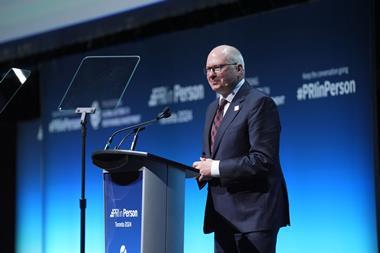The average funding ratio of funded pension obligations of Switzerland’s top companies fell from 107% in 2022 to 104% in 2023, mainly due to a stronger increase in liabilities than assets due to lower interest rates, according to the latest analysis by WTW of top Swiss corporates.
WTW’s Pension Risk Study examines the pension obligations and pension costs reported in the annual reports of companies in the Swiss Leader Index (SLI) in accordance with the international accounting standards IFRS and US-GAAP.
This is in contrast to data published by Swiss pension funds based on Swiss GAAP FER26 data. WTW’s latest SLI study does not, however, include Swatch Group and Lindt&Sprüngli as, the consultancy said, they do not provide figures comparable to the other companies.
The average coverage ratio of all SLI pension obligations (funded and unfunded) fell from 99% to 96% between 2022 and 2023, the study showed.
WTW said that after a relatively stable year in 2023 on the financial markets, stability has so far been maintained in the first half of 2024, with the initially sharp rise in inflation in 2022 reversed thanks to the measures taken by central banks.
“We are indeed observing a trend reversal in interest rates,” said Christian Heiniger, senior director at WTW in Zurich.
The Swiss National Bank has already cut the key interest rate in two steps, from 1.75% to 1.25%.
The central bank is in a comfortable position thanks to the low inflation rate by international standards, said WTW. A possible further reduction in interest rates would support the market value of long-term Swiss bonds, but at the same time increase pension obligations, it added.
“Pension funds should proactively prepare for this scenario, otherwise the average coverage ratio will deteriorate further,” it said, noting that with a typical 15-year duration of pension obligations, a 25 basis point reduction in the discount rate means an increase in obligations of around 3%.
So far, only minor effects of the interest rate cuts on balance sheets have been observed, WTW said.
Since the beginning of 2024, the discount rate has fluctuated between 1.3% and 1.5%. On the other hand, inflation has gradually declined since January 2023 and experts predict a continuous decline in the inflation rate for the whole of 2024.
Read the digital edition of IPE’s latest magazine
































No comments yet